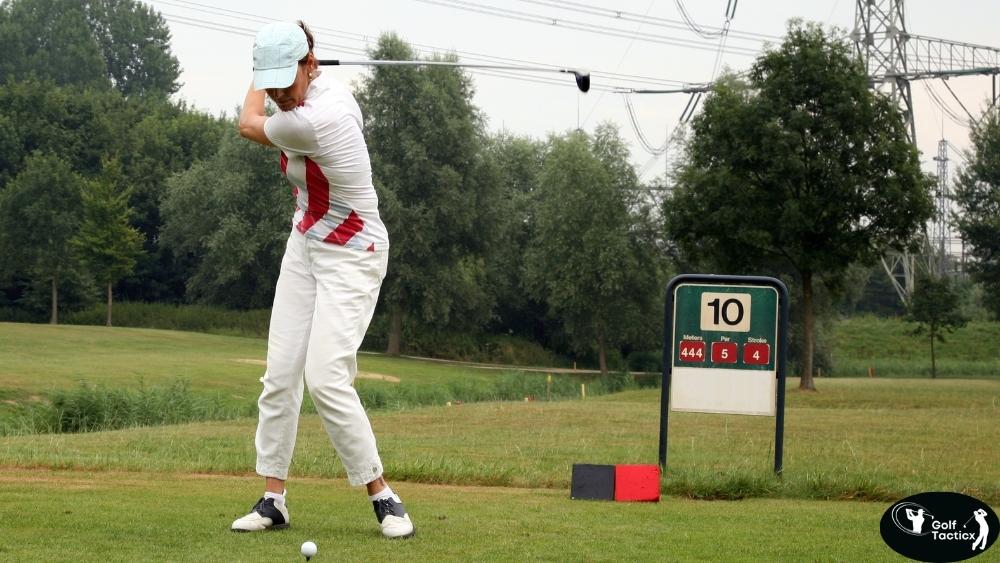In our previous posts, we’ve covered how to develop an effective practice routine and enhance your driving range sessions. Now, let’s focus on tracking and analyzing your golf statistics to identify areas for improvement and elevate your game.
Tracking and analyzing golf stats is a great way to improve your game. By keeping an eye on key numbers, you can understand your strengths and weaknesses. Whether you’re a beginner or an experienced player, Tracking and Analyzing Golf Stats helps you make more informed decisions on the course. In this post, we’ll explore simple tips and tools to track your performance, allowing you to focus on what really matters for better results.
Why Tracking Your Golf Stats Matters
Imagine trying to improve without knowing where you’re going wrong. Tracking your golf stats provides valuable insights into your performance, helping you understand your strengths and pinpoint areas that need attention. This data-driven approach allows you to make informed decisions about your practice and course strategy.
Key Stats to Track
As a beginner, start by monitoring these fundamental statistics:
Fairways Hit: The percentage of times you land your tee shot on the fairway.
Greens in Regulation (GIR): The percentage of times you reach the green in the expected number of strokes.
Putts per Round: The average number of putts you take during a round.
Up and Downs: The percentage of times you save par after missing the green in regulation.
These basic stats provide a solid foundation for understanding your game.
Advanced Stats for Deeper Insights
As you progress, consider tracking more detailed statistics:
Strokes Gained: Measures your performance relative to other golfers in specific areas like putting, approach shots, and off-the-tee play.
Scrambling: The percentage of times you save par after missing the green in regulation.
Driving Accuracy: The percentage of fairways hit off the tee.
Approach Shot Proximity: Average distance from the hole after approach shots.
These advanced metrics offer a deeper understanding of your game and highlight specific areas for improvement.
Tools to Help You Track Your Stats
Tracking your golf stats is a great way to understand your game and improve over time. Using the right tools can help you monitor your performance and focus on areas that need work. Here are some essential tools that can help you track your golf stats effectively.
Golf Rangefinder A rangefinder helps you measure the exact distance to the flag, hazards, or other targets on the course. This tool gives you precise measurements that can assist in selecting the right club for each shot.
Golf GPS Watch – A golf GPS watch provides real-time distance information, helping you understand the yardages on the course. It can track your shots and show the distance to key points like the green, hazards, and bunkers. This is especially useful for golfers who want to improve their course management skills.
Shot Tracker – A shot tracker is a small device that attaches to your golf bag or golf clubs. It automatically tracks each shot you take and records the distance, speed, and direction. This allows you to analyze your shots after the round and focus on specific areas where you need improvement.
Golf Swing Analyzer – A swing analyzer attaches to your golf club or glove and tracks key aspects of your swing, including speed, tempo, and angle. By reviewing this data, you can make adjustments to your technique and improve your consistency on the course.
Analyzing Your Stats
Once you’ve collected sufficient data, it’s time to analyze it:
Identify Patterns: Look for trends in your performance. Are there specific areas where you consistently perform well or poorly?
Set Goals: Based on your analysis, set realistic goals for improvement. For example, aim to increase your fairways hit percentage or reduce your putts per round.
Develop a Plan: Create a practice plan targeting your identified weaknesses. If your approach shot proximity is high, focus on improving your iron play.
Practical Example
Let’s say you’ve been tracking your stats and notice that your fairways hit percentage is low, but your greens in regulation (GIR) percentage is high. This suggests that while you’re accurate with your approach shots, you might be missing fairways off the tee. To address this, you could:
Practice with a 3-wood or hybrid: These clubs are generally easier to control off the tee compared to a driver.
Work on your tee shot accuracy: Focus on hitting the fairway more consistently during practice.
By targeting this specific area, you can work towards improving your overall performance.
Engaging with the Next Post
In our next post, we’ll discuss how to identify your biggest weaknesses on the course. Understanding where you struggle the most will allow you to tailor your practice sessions effectively. Stay tuned for actionable insights that will help you take your game to the next level.
Remember, tracking and analyzing your stats is a powerful tool for improvement. By understanding your performance metrics, you can make informed decisions about your practice and course strategy, leading to a more enjoyable and successful golfing experience. Happy golfing!
Conclusion
In conclusion, Tracking and Analyzing Golf Stats is a valuable tool for improving your game. By keeping track of your performance and reviewing your statistics, you can identify areas for improvement and build on your strengths.
Whether you’re a beginner or an experienced player, Tracking and Analyzing Golf Stats helps you make smarter decisions on the course and boost your overall performance. Start using these stats today and watch your game improve over time.
In the next post, we will discuss how to identify your biggest weaknesses and turn them into opportunities for growth and improvement in your personal or professional life.
















Leave a Reply